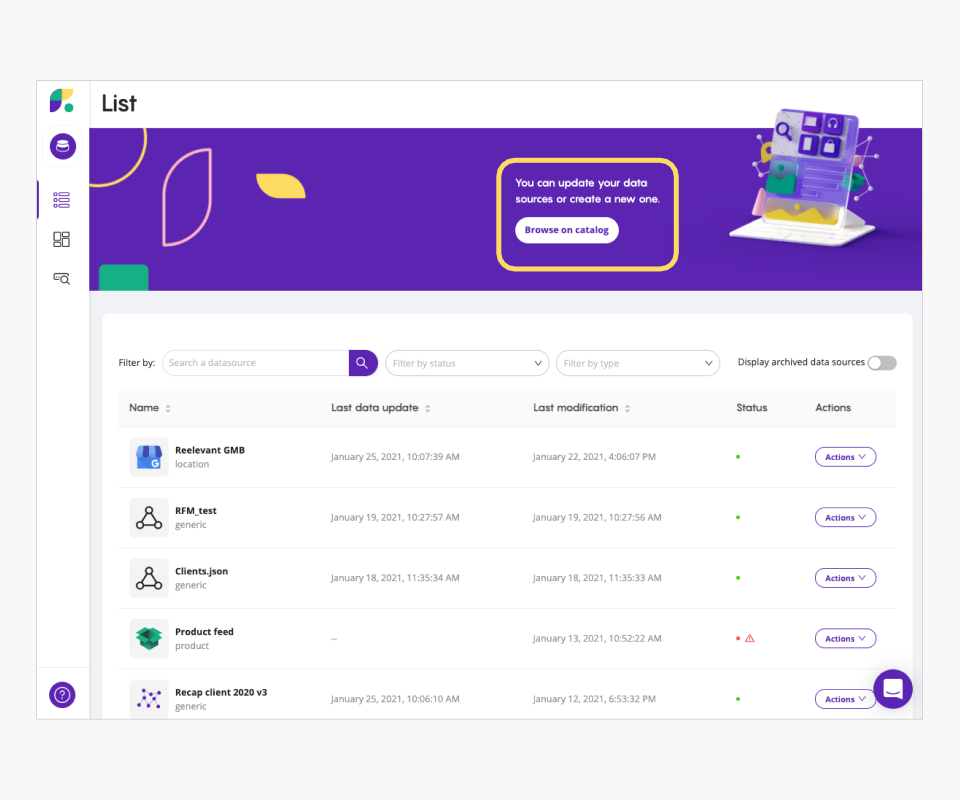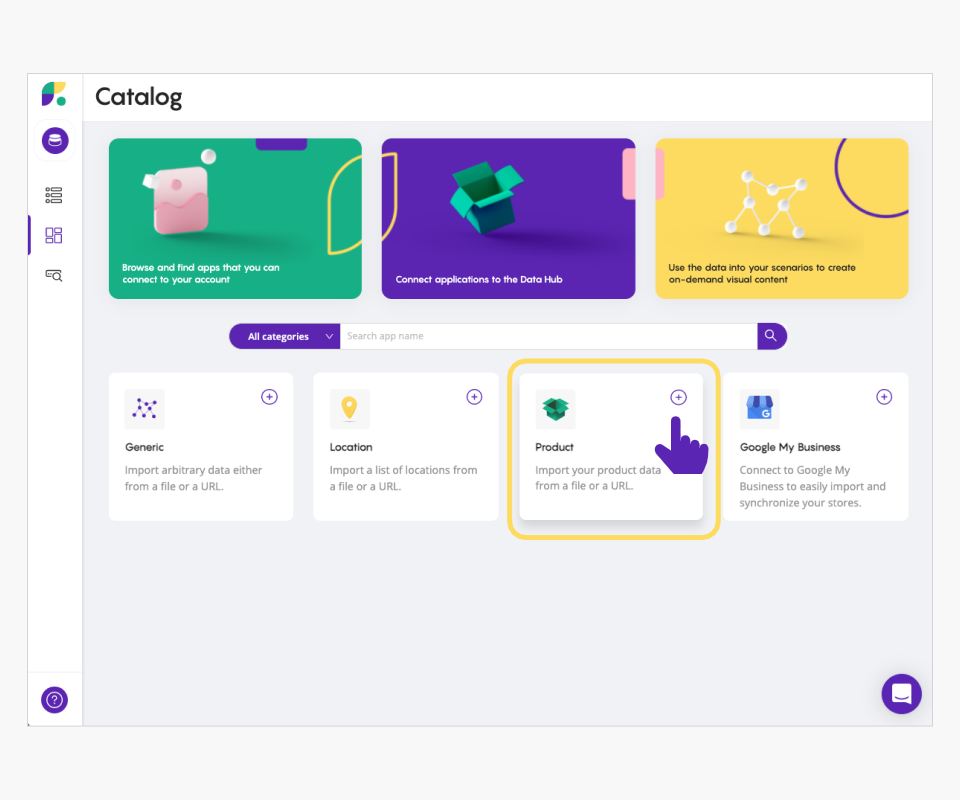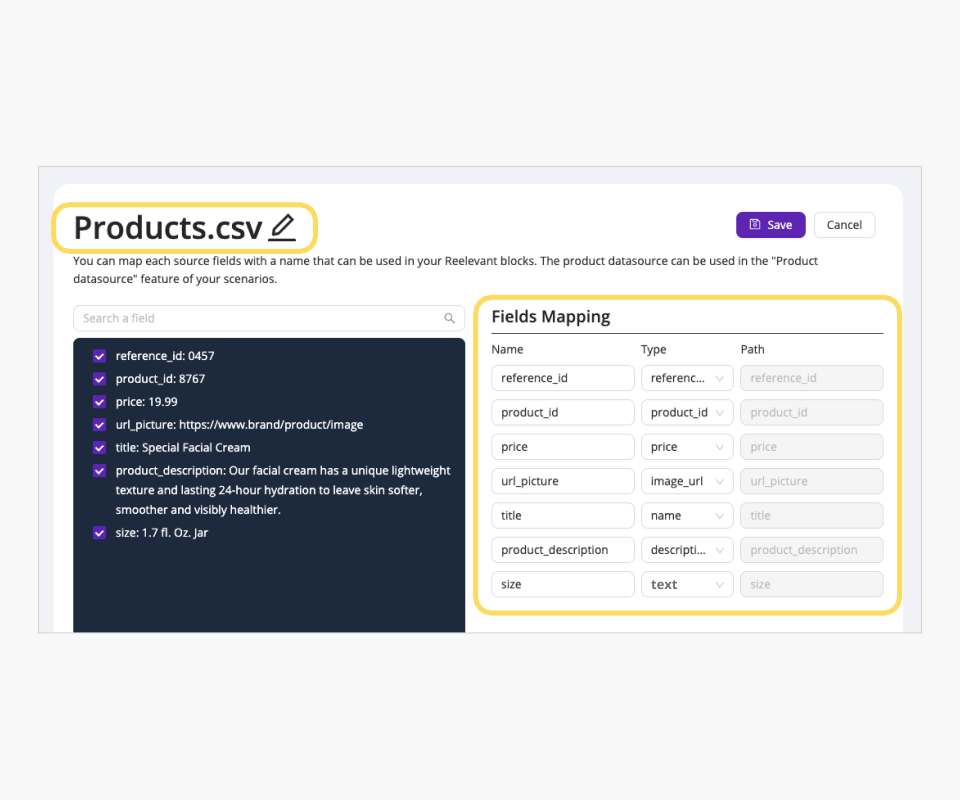







This will bring you to the import page. First, you’ll need to choose your source.
There are two possible source types:
- A URL: xml, json, ndjson, Google Sheet
- A file: csv and xlsx

When importing your file or entering your URL, the Data Source starts parsing it. A message appears when validating your file import (in the correct format).
You now need to indicate the function of your feed, which is “Product” here.
Click “Validate” to move to the next step.

You then have the option to rename your file.
This will be the name displayed in the “Product feed” feature when you choose the data source in your scenario.
To change the name of your feed, click the edit icon.
Below, you will find all the fields contained in your product feed.
You will use these fields both when setting up the “Product feed” feature when you define certain filter rules and also when you create your dynamic content.
By default, all the boxes are checked. To remove a field that you do not want to use when creating your scenarios, uncheck the box for the corresponding field.
The Data Source supports up to 63 fields. If your feed exceeds 63 fields, the rest of the fields will not be taken into account.
Also, if you uncheck a box, you can then check another box if your feed has more than 63 fields.
Once the fields have been checked and/or unchecked, indicator to the right that the field mapping is correct.
Some mapping fields are automatically detected by the Data Source because they are required for importing a product feed (reference_id, product ID, price, URL, product description, etc.).
Reference_id is used when there are products with additional information, such as size. The “reference_id” is therefore the most detailed product ID (ex. for a t-shirt, the product ID corresponds to the t-shirt, and the reference_id corresponds to the same t-shirt with the additional size).
Other types of fields in the mapping are specific to certain fields in the feed and will then be called “text” or “number”.
“Text” is for all the fields in your product feed that contain letters (ex. “clothing” for ready-to-wear, “wine” for food, etc.), and “number” is for the fields that contain only numbers (ex. inventory, promotions, etc.).
So, to check the field mapping in the DataHub, you’ll need to distinguish between the two.
Once you have checked the field mapping, you can save. Your feed will begin integrating into the DataHub.
